Georgia Sentinel Landscape
-
Georgia
-
Established 2018
About
The Georgia Sentinel Landscape is home to several of the nation’s most important military installations and ranges, including Fort Benning, Fort Stewart, Hunter Army Airfield, Townsend Bombing Range, Fort Gordon, Robins Air Force Base, Marine Corps Logistics Base-Albany, Moody Air Force Base and Naval Submarine Base (NSB) Kings Bay. Together, these defense facilities support heavy armor maneuver areas, unimpeded air-to-ground ranges, live fire training facilities, low-level flight routes, and ballistic missile submarine fleets, which are a key component of the nuclear triad identified in the National Defense Strategy. The military accounts for a significant portion of the state’s economy, with an annual economic impact of over $13 billion[1]. The Georgia Sentinel Landscape also encompasses a high concentration of prime timber land and large swaths of longleaf pine forests. Georgia Sentinel Landscape partners are committed to strengthening military readiness by supporting agricultural communities, sustaining working forests, promoting coastal resiliency, and improving water quality.
Interactive Landscape Map
Total Funding by Partner
| Partner | FY2017 | FY2018 | FY2019 | FY2020 | FY2021 | FY2022 |
|---|---|---|---|---|---|---|
| USDA | $10.42M | $12.82M | $12.36M | $13.20M | $32.82M | $7.48M |
| DoD | $3.51M | $10.08M | $11.18M | $19.27M | $1.97M | $9.09M |
| DOI | $0.00M | $0.09M | $0.04M | $7.90M | $5.00M | $2.71M |
| State | $15.84M | $3.40M | $1.52M | $37.56M | $31.18M | $3.50M |
| Private | $7.53M | $23.63M | $8.52M | $11.98M | $22.22M | $0.17M |
Total Acres Protected and Enrolled
| Acres Protected (Since Designation) | 223370.00 |
|---|---|
| Acres Enrolled (During FY22) | 346809.00 |
Partnership Highlights
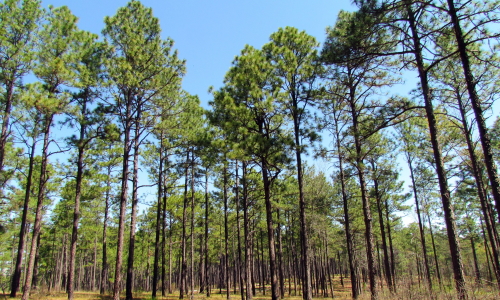
The Gopher Tortoise Initiative
A central goal of the Georgia Sentinel Landscape partners is to conserve longleaf pine forests. Despite once blanketing the Southeast, longleaf pine forests have steadily disappeared in the region due to development, clear-cutting, and other factors. Today, only three percent of the original 90 million acres of longleaf pine remain intact. The degradation of this ecosystem threatens the gopher tortoise, an imperiled species whose burrows provide habitat for an additional 360 species. The Georgia Department of Natural Resources (DNR) recognized that listing the gopher tortoise under the Endangered Species Act (ESA) would impose challenges on the state’s economy and constrain military testing and training activities. In response, the agency partnered with U.S. Department of Defense’s (DoD) Readiness and Environmental Protection Integration (REPI) Program, U.S. Department of Agriculture’s (USDA) Natural Resource Conservation Service, U.S. Fish and Wildlife Service (USFWS), and multiple non-profits to develop the Gopher Tortoise Initiative in 2015. The goal of the initiative is to protect 65 of the 122 viable gopher tortoise populations on 100,000 acres of habitat throughout the state. If partners meet this target, scientists from The Nature Conservancy have concluded that the species will not need regulatory protection in Georgia. To date, partners have protected 54 viable gopher tortoise populations. With most of the targeted habitat extending across the Georgia Sentinel Landscape, the partnership has become a natural vehicle through which Gopher Tortoise Initiative projects are coordinated.
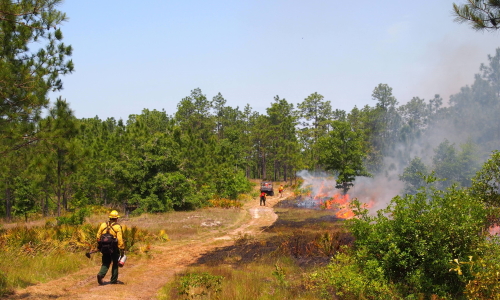
Naval Station Kings Bay wins REPI Challenge
In 2019, the U.S. Navy, Georgia DNR, the Nature Conservancy, the Conservation Fund, USFWS, the U.S. Forest Service (USFS), and multiple philanthropic organizations won a competitive grant to protect Cabin Bluff, which will increase mission sustainability for NSB Kings Bay in three ways. First, the project will reduce the risk of incompatible development around the base. At 11,000-acres, Cabin Bluff is the largest undeveloped, unprotected property on Georgia’s coastline. Its proximity to major highways and population centers made the property an attractive plot for development. Prior to acquisition, the parcel was zoned for 10,000 homes and 1 million square feet of commercial space. Permanently protecting Cabin Bluff will, therefore, prevent development that would complicate the installation’s ability to deploy nuclear submarines into the Atlantic Theatre. Second, the project will increase NSB Kings Bay’s resilience to climate change impacts by ensuring that the installation has access to a healthy shoreline. Waterfront properties such as Cabin Bluff encompass tidal marshes that defend against erosion by absorbing storm surge, flooding, and rising sea levels. Lastly, the project will reduce the likelihood that training restrictions triggered by the ESA will encumber NSB Kings Bay’s mission. Cabin Bluff is home to 20 distinct habitat types, including longleaf pine forests that support viable gopher tortoise populations. With proper restoration, this property can contribute to existing efforts made by DoD to ensure that the species can thrive without regulatory protection. The Cabin Bluff project demonstrates the advantages of strengthening national defense with the conservation of critical landscapes.
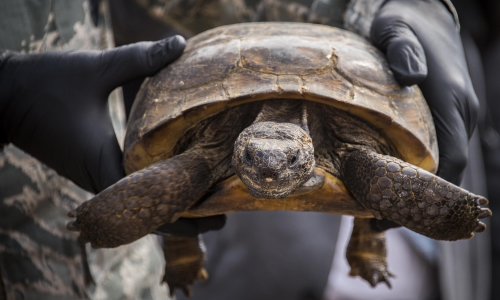
Hilliard Plantation Opens for Public Use
In 2019, Georgia Sentinel Landscape partners opened the Hilliard Plantation for public use. Extending 8,100 acres across Marion County and Talbot County, the property lies within the Chattahoochee Fall Line Wildlife Management Area. This region of Georgia was previously thought of as a part of the state with limited recreation options. Now, the Hilliard Plantation will provide residents with exceptional hiking, fishing, hunting, and camping opportunities. The project also has ecological benefits. The Hilliard Plantation is replete with fire-managed longleaf pine, which provides habitat to the gopher tortoise, red cockaded woodpecker, southern hognose snake, and other imperiled species. The project’s diverse funding sources reflect the myriad benefits that it provides to the region. State agencies, the Knobloch Family Foundation, USFWS, USFS, the Georgia Forestry Commission, Capital One, the World Wildlife Foundation, and the DoD REPI Program contributed resources to this effort.
Our Partners
Federal Partners
- National Parks Conservation Association
- U.S. Department of Agriculture, Farm Service Agency (FSA)
- U.S. Department of Agriculture, Forest Service (USFS)
- U.S. Department of Agriculture, Natural Resource Conservation Service (NRCS)
- U.S. Department of Defense, Readiness and Environmental Protection Integration (REPI)
- U.S. Department of the Interior, Fish and Wildlife Service (USFWS)
- U.S. Department of the Interior, National Park Service (NPS)
In The News
-
Hilliard Plantation Opens for Public Use as a Wildlife Management Area
Hilliard Plantation is within Fort Benning’s Army Compatible Use Buffer Boundary and using funding from the Georgia Department of Natural Resources, the Department of Defense and the Nature Conservancy, the property was purchased for utilization as a state Wildlife Management Area in 2019. This acreage provides public hunting access to a county that previously had no public access for outdoor recreation. It also protects several hundred acres of longleaf pine and valuable habitat.
Read More -
Let’s Seize the Opportunities that Ocmulgee Becoming a Historic Park has Given Us
This article is an opinion piece concerning federal expansion of the Ocmulgee National Monument near Robins Air Force Base and the opportunities it presents in tandem with the Georgia Sentinel Landscape. In 2019 Congress authorized an expansion of the Ocmulgee National Monument from 700 acres to 2,800 and designated it a National Park. This increases public access to a historically significant Native American mound system along the Ocmulgee River.
Read More -
Southern Georgia Named ‘Sentinel Landscape’ for Readiness Enhancement
This article is the original Department of Defense Press Release from 2017 designating the Georgia Sentinel Landscape. This article provides a brief overview of the Georgia Sentinel Landscape’s goals and why this designation is important for the installations and communities of Georgia.
Read More -
Savannah River Fire Festival
Susan French from the Longleaf Alliance and the mascot, Burner Bob discuss the Savannah Fire Festival at the Mary Kahrs Warnell Forest Education Center.
Read More
Resources
-
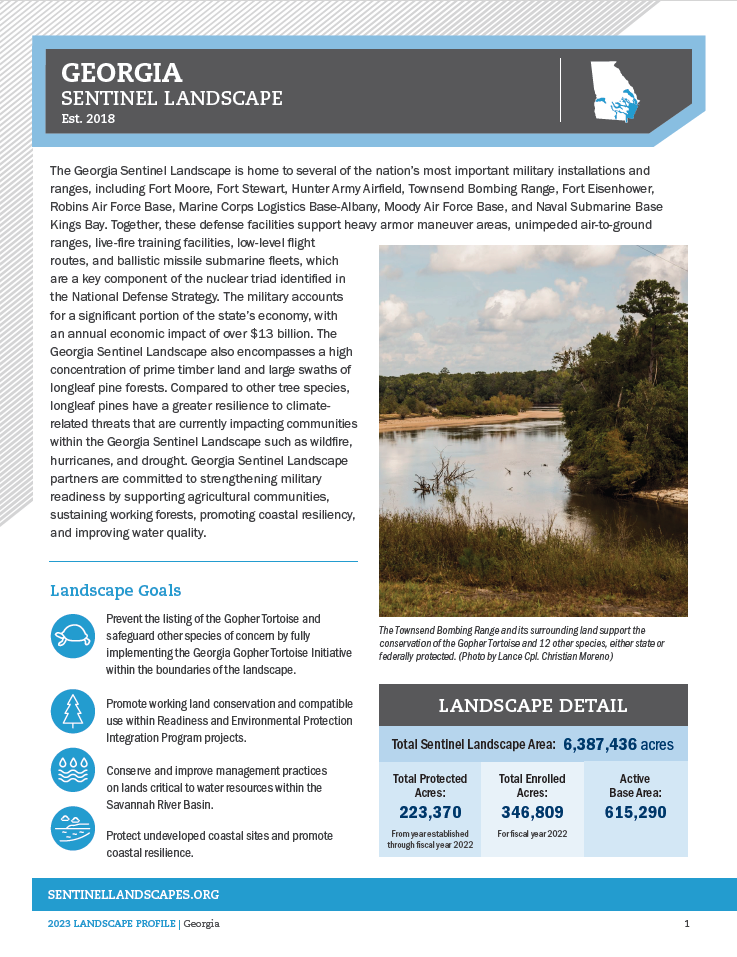
2023 Georgia Sentinel Landscape Profile
-
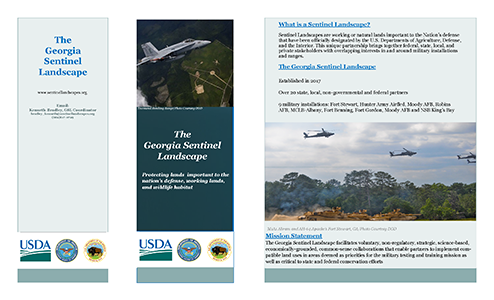
Georgia Sentinel Landscape Brochure
Meet the Coordinator

Ken Bradley
georgia@sentinellandscapes.org
In May 2018, Ken retired as an Army Lieutenant Colonel with 24 years of active federal service. Ken is a 1998 graduate of the United States Military Academy at West Point and also earned a Master's in Civil Engineering from Missouri University of Science and Technology. He served as an engineer officer in the 3rd Infantry Division, 1st Cavalry Division and most recently the Mississippi Army National Guard as the Environmental Program Manager where he managed Camp Shelby's Army Compatible Use Buffer Program.
“Georgia Conservancy is pleased to support Sentinel Landscapes. It is a great program that provides a focus on significant Georgia conservation priorities in collaboration with our most important employers- Defense, Agriculture and Forestry.”